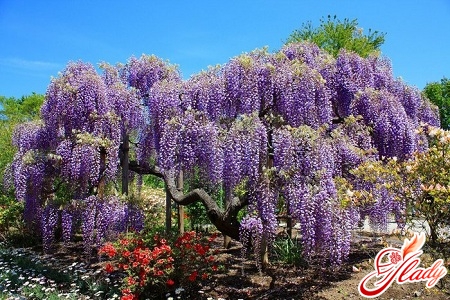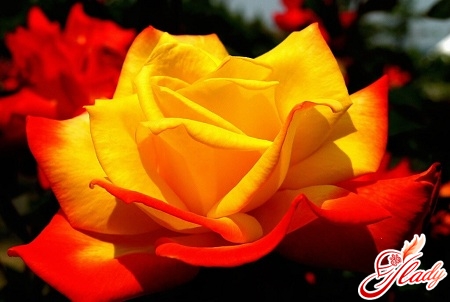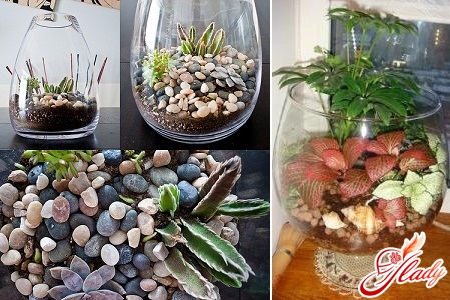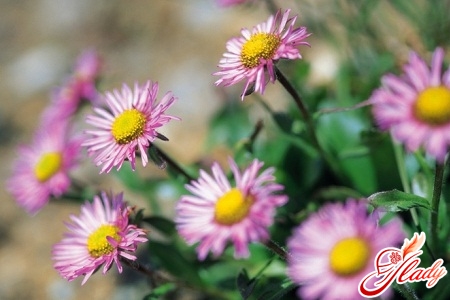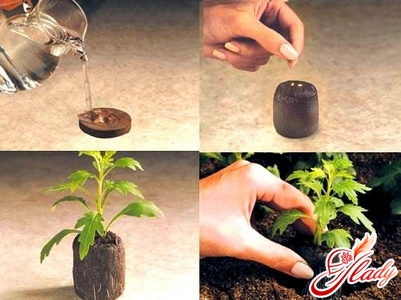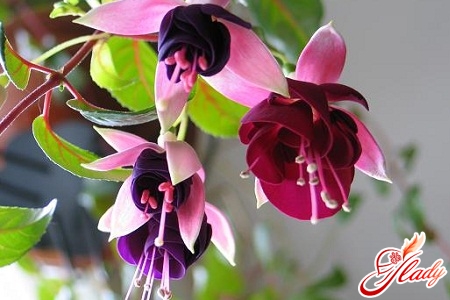 This regular at ours has simply gorgeous flowers.window sills - multi-colored, bright, unusually shaped, similar to dancing ballerinas. By the way, the popular name for fuchsia is ballerina. Many beautifully flowering indoor plants are capricious and require special care. But fuchsia is a pleasant exception. It is unpretentious and, perhaps, this is precisely why it has gained such popularity. Caring for fuchsia is not difficult even for novice gardeners.
This regular at ours has simply gorgeous flowers.window sills - multi-colored, bright, unusually shaped, similar to dancing ballerinas. By the way, the popular name for fuchsia is ballerina. Many beautifully flowering indoor plants are capricious and require special care. But fuchsia is a pleasant exception. It is unpretentious and, perhaps, this is precisely why it has gained such popularity. Caring for fuchsia is not difficult even for novice gardeners.
Types of Fuchsia
Fuchsia is native to the mountain forests of America, where itgrows under the canopy of trees, wrapped in cool fogs. These are small shrubs and trees, numbering more than a hundred species. However, not many species of this remarkable plant are known in indoor floriculture. Fuchsia graceful. A shrub reaching a meter in height with thin drooping reddish shoots and lanceolate leaves. Its graceful flowers hang on threadlike peduncles. The pink or red calyx of the flower has the shape of a narrow dissected funnel. The bell-shaped corolla is painted red-violet, and the long stamens and pistil are carmine-red. Fuchsia sparkling is a semi-shrub up to two meters high. Its reddish stems become woody at the base, and the leaves are unusually large for this genus (about 20 cm in length). Flowers are collected in dense panicles. The calyx of the flower is bright red with pale yellow teeth. The short corolla has a rich coral color. Hybrid fuchsia is the most common type of indoor fuchsia, numbering more than two thousand varieties. Among the hybrid fuchsias there are low-growing plants, standard forms, upright shrubs, and specimens with drooping shoots. Their flowers are distinguished by a special variety of colors and shapes. Their colors represent the entire range - from milky white and soft pink to deep purple and purple-red. A fantastic effect is achieved by a contrasting combination of different shades in the color of one flower. The guarantee that your fuchsia will bloom and delight you is care according to all the rules, attention and care on your part.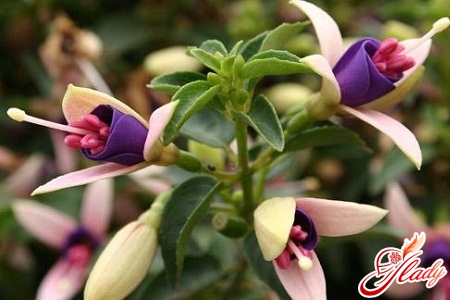
Rules for successful fuchsia growing
Fuchsias bloom profusely and continuously from spring tolate autumn. For abundant flowering, this plant needs rest in the winter, when the plants partially shed their leaves. At this time, watering is reduced to a minimum and fuchsias are kept in cool and relatively dry conditions. And in the spring, they are moved to a warm place and transplanted into a loose soil mixture (two parts of leaf soil and one part of humus, sand and peat). Transplanted fuchsias are placed in a bright place, providing a constant flow of fresh air, protecting from direct sunlight and spraying on especially hot days. They are watered abundantly during the flowering period, but not often - once every two to three weeks. To prevent the plant from shedding flowers and buds, it is not disturbed by moving it from place to place. General care of fuchsia comes down to certain requirements, which are as follows:
- temperature - moderate or slightly lower (20-20 degrees);
- light - bright, but with shading from the direct sun;
- watering - abundant during flowering and temperate during dormancy;
- transplantation - annual, in the spring before the beginning of flowering or in the autumn after it;
- Propagation - in spring and summer by stem cuttings.
Possible difficulties in growing
Despite their unpretentiousness, fuchsias can still be capricious sometimes. How does this manifest itself?
As you can see, to successfully grow fuchsiayou need very little: a well-organized rest period, proper watering, bright light and moderately warm air. You must agree that these are not too high requirements for such an unusually beautiful flower. Just try to follow the rules and then fuchsia and caring for it will bring you only pleasant troubles. And the fireworks of its wonderful flowers will more than pay for all your "labor costs". We recommend reading:




